PENGUIN  CLASSICS
CLASSICS
THE LOSS OF THE SHIP ESSEX,
SUNK BY A WHALE
OWEN CHASE was born on Nantucket Island in 1796. He was first mate of the whaleship Essex when she was rammed and sunk by a whale in November 1820. His account of the sinking and of the crews ordeal in the open boats was published the following year. One of islands most successful whaling captains, he retired from the sea in 1840. He died on Nantucket in 1869.
At fourteen years old, THOMAS NICKERSON was the youngest member of the Essexs crew when the whaleship departed from Nantucket for the last time in August 1819. After a career in the whale fishery and merchant service, Nickerson become a shipping broker in Brooklyn, New York. He retired to Nantucket in the 1870s and became the proprietor of a boardinghouse. At the encouragement of one of his guests, the professional writer Leon Lewis, he wrote an account of the Essex disaster that was not published until 1984. Nickerson died in 1883.
NATHANIEL PHILBRICK is the author of the National Book Awardwinning New York Times bestseller In the Heart of the Sea. His newest book, Sea of Glory, will be available from Viking in November 2003. A leading authority on the history of Nantucket, he is director of the Egan Institute of Maritime Studies and a research fellow at the Nantucket Historical Association. A champion sailboat racer, he lives in Nantucket, Massachusetts.
THOMAS PHILBRICK is Professor Emeritus of English at the University of Pittsburgh and a lifelong small boat sailor. He is the author of James Fenimore Cooper and the Development of American Sea Fiction and the study St. John de Crvecoeur. He has edited five of Coopers novels and travel books for the Cooper Edition, as well as Danas Two Years Before the Mast for Penguin Classics.
THE LOSS OF THE SHIP ESSEX,
SUNK BY A WHALE

THOMAS NICKERSON,
OWEN CHASE, AND OTHERS
EDITED WITH AN INTRODUCTION
AND NOTES BY NATHANIEL PHILBRICK
AND THOMAS PHILBRICK

PENGUIN BOOKS
Published by the Penguin Group
Penguin Group (USA) Inc., 375 Hudson Street, New York, New York 10014, U.S.A.
Penguin Group (Canada), 90 Eglinton Avenue East, Suite 700, Toronto, Ontario,
Canada M4P 2Y3 (a division of Pearson Penguin Canada Inc.)
Penguin Books Ltd, 80 Strand, London WC2R 0RL, England
Penguin Ireland, 25 St Stephens Green, Dublin 2, Ireland (a division of Penguin Books Ltd)
Penguin Group (Australia), 250 Camberwell Road, Camberwell, Victoria 3124,
Australia (a division of Pearson Australia Group Pty Ltd)
Penguin Books India Pvt Ltd, 11 Community Centre, Panchsheel Park, New Delhi 110 017, India
Penguin Group (NZ), 67 Apollo Drive, Rosedale, North Shore 0745,
Auckland, New Zealand (a division of Pearson New Zealand Ltd)
Penguin Books (South Africa) (Pty) Ltd, 24 Sturdee Avenue, Rosebank,
Johannesburg 2196, South Africa
Penguin Books Ltd, Registered Offices: 80 Strand, London WC2R 0RL, England
This volume first published in Penguin Books 2000
Selection, introduction, and notes copyright Nathaniel Philbrick and Thomas Philbrick, 2000
All rights reserved
The publication of Thomas Nickersons Desultory Sketches is by arrangement with the Nantucket Historical Association. Address inquiries concerning the reprinting of portions of this text to Penguin Putnam Inc. Queries regarding other uses should be addressed to the Nantucket Historical Association, 2 Whalers Lane, P.O. Box 1016, Nantucket, Massachusetts 02554.
Illustrations and Thomas Nickersons letter to Leon Lewis courtesy of the Nantucket Historical Association.
Herman Melvilles annotations in his copy of Owen Chases Narrative (*AC85 M4977 R821c (B)) reprinted by permission of the Houghton Library, Harvard University.
Excerpt from the Journal of the Ship Surry reprinted by permission of Mitchell Library, State Library of New South Wales, Sydney, Australia.
Excerpt from letter from Phebe B. Chase to Winnifred Battie reprinted by permission of James Chase.
LIBRARY OF CONGRESS CATALOGING IN PUBLICATION DATA
The loss of the ship Essex, sunk by a whale: first-person accounts/Thomas Nickerson, Owen Chase, and others; edited with an introduction and notes by Nathaniel Philbrick and Thomas Philbrick.
p. cm.(penguin classics)
Includes biographical references.
ISBN: 978-1-101-66165-9
1. Essex (Whaleship) 2. Survival after airplane accidents, shipwrecks, etc.
3. Shipwreckspacific Ocean. I. Nickerson, Thomas, 1805-1883. II. Philbrick, Nat.
III. Philbrick, Thomas. IV. Series
G530.E77 L67 2000
910.9164dc21 00-020147
Except in the United States of America, this book is sold subject to the condition that it shall not, by way of trade or otherwise, be lent, resold, hired out, or otherwise circulated without the publishers prior consent in any form of binding or cover other than that in which it is published and without a similar condition including this condition being imposed on the subsequent purchaser.
The scanning, uploading and distribution of this book via the Internet or via any other means without the permission of the publisher is illegal and punishable by law. Please purchase only authorized electronic editions, and do not participate in or encourage electronic piracy of copyrighted materials. Your support of the authors rights is appreciated.
INTRODUCTION
O N 20 N OVEMBER 1820 the Nantucket whaleship Essex was cruising the Pacific Ocean, almost a thousand miles from the nearest land, when it was repeatedly rammed by an eighty-five-foot sperm whale. The ship rapidly filled with water and capsized. The men were able to salvage some casks of bread and water from the wreck, along with several Galapagos tortoises. Fearing cannibals on the islands to the west, the twenty-man crew set out in three small whaleboats for South America, 3,000 miles away, stopping only for a six-day respite on barren Henderson Island in mid-Pacific. Within three months of the wreck, more than half the men were dead, starvation having forced the survivors to enact the very fate they had sailed all that distance to escape.
On 23 February 1820, a whaleboat containing the Essexs Captain Pollard and another crew member was picked up by a Nantucket ship almost within sight of the Chilean coast. That night Captain Aaron Paddack recorded Pollards account of the ordeal. Paddacks letter would be the first word of the disaster to reach the Essexs home port of Nantucket Island, in June of that year. In November, another survivor, the Essexs first mate, Owen Chase, published a much more detailed narrative. Two decades later, a young whaleman by the name of Herman Melville read Chases account. Melville eventually procured his own copy of Chases narrative before publishing Moby-Dick (1851), in which a whaleship is rammed by a whale.
For the next 130 years, the Essex disaster would be known almost exclusively in the context of Melvilles use of Chases narrative. Further, mostly fragmentary, accounts based on the testimony of other Essex crew members would come to light, but these lacked the authority and scope of Chases narrative. In 1935, Robert Gibbings published an edition of Chases narrative that included two other sources: a pamphlet written by Thomas Chappel, one of the

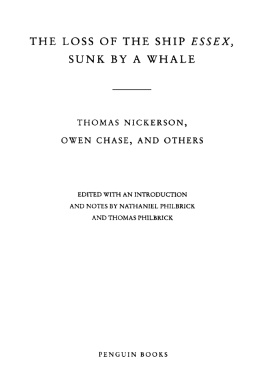

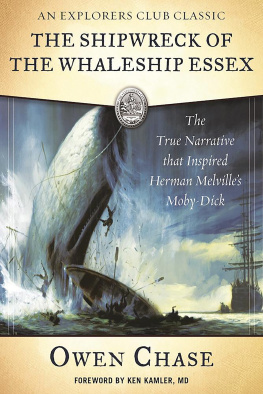
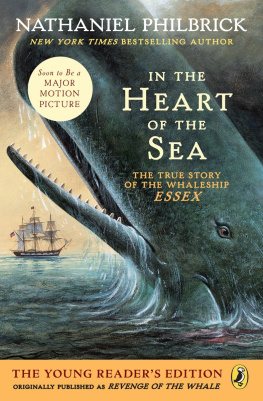


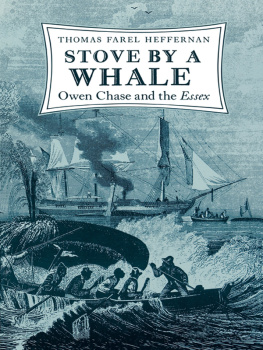
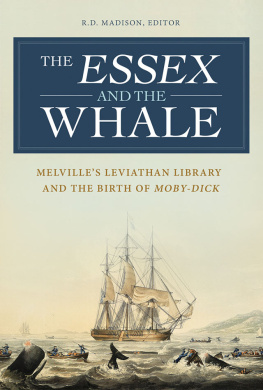


 CLASSICS
CLASSICS
